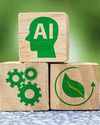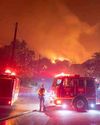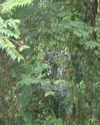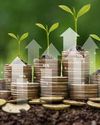
Climate change, also known as climate transformation, refers to changes in the planet’s typical climate in terms of temperature, precipitation, and wind that are primarily caused by human activity. The global climate has always fluctuated. It is changing, however, much faster than in the past, and this time it is due to human activity. The use of fossil fuels such as coal, gas, and oil for transportation, energy production, and industry contributes significantly to climate change. Climate change is not a new phenomenon, but little appears to have been done to address it on a global scale. The Himalayan region is grappling with serious consequences of climate change, which are posing a threat to water, food, and energy security. Despite efforts to limit global warming, alarming projections of significant glacier loss by 2100 suggest that water scarcity, food shortages, increased disasters, biodiversity decline, pandemics, and poverty will result. Meeting the 1.5°C target appears unlikely, given the region’s current warming rate of 0.2°C per decade, which is expected to exceed the global average by 0.3–0.7°C in the future.
Climate change has far-reaching repercussions for natural systems and particular regions, including the Hindu Kush-Himalayan region. Mountains around the world are particularly vulnerable to the effects of rapid climate change. Because of global warming, the region’s sensitive glaciers are melting at a faster rate, resulting in rising sea levels, altered river flows, and threats to downstream water resources and ecosystems. Furthermore, the region is vulnerable to natural hazards such as landslides, avalanches, and glacial lake outburst floods (GLOFs). These occurrences pose significant risks to human settlements, infrastructure, and regional ecosystems.
هذه القصة مأخوذة من طبعة July 2023 من TerraGreen.
ابدأ النسخة التجريبية المجانية من Magzter GOLD لمدة 7 أيام للوصول إلى آلاف القصص المتميزة المنسقة وأكثر من 9,000 مجلة وصحيفة.
بالفعل مشترك ? تسجيل الدخول
هذه القصة مأخوذة من طبعة July 2023 من TerraGreen.
ابدأ النسخة التجريبية المجانية من Magzter GOLD لمدة 7 أيام للوصول إلى آلاف القصص المتميزة المنسقة وأكثر من 9,000 مجلة وصحيفة.
بالفعل مشترك? تسجيل الدخول

IBM's State of Sustainability Readiness Report 2024 Shows India is a Leader in Al-Driven Sustainability Initiatives
Business leaders in India see the benefits of investing in IT for sustainability, with 98 per cent planning to increase investments in IT for sustainability over the next 12 months. Around 96 per cent of Indian executives surveyed believe AI will positively influence sustainability goals.

Sustainable Low-Carbon Heat Network For Meeting Woking Town Centre's Needs in London
In this article, Dr Marianne Furtado de Nazareth highlights that sustainable low-carbon heat network at Woking Town Centre in UK, London is a wonderful project as it will allow Woking to grow and develop in a sustainable way, utilizing low-carbon heat to meet the town's needs.

The True Cost of Wildfires
More than Dollars and Cents

Staying Connected with Nature With Our Daily Routines and Lifestyle
In this article, N Kalyani discusses how disconnected we are from nature, both in terms of using natural and organic products and aligning our lives with the natural world. Given the current state of our lives, it would be valuable and intriguing to explore ways—no matter how small-to reconnect with nature through our daily routines and lifestyle.
Tiger: Iconic Symbol of Asia
When Stripes Drew a Country’s Borders

Sacred Groves Help Community in Watershed Management
Pioneering Initiative in Velhe

Role of AI in Achieving Renewable Energy Goals For an Environmentally Sustainable Future
In this article, A Jyothi Mahalingam highlights how artificial intelligence (AI) has become crucial for sustainable renewable energy (RE) generation, driven by the growing demand for electricity.

The Global Plastic Crisis
Current Situation and Strategies to Combat Plastic Pollution

GRIHA Certification
The Green Gold Standard Transforming India's Real Estate Market

Decoding the Union Budget 2025
A Green Lens on Energy, Resilience, and Sustainable Development